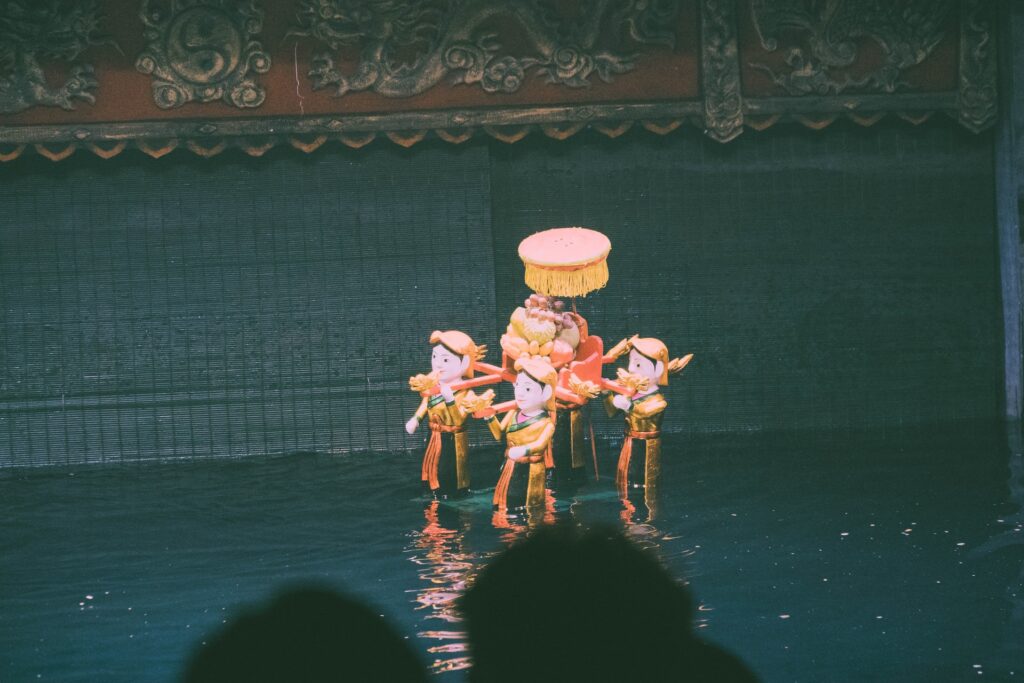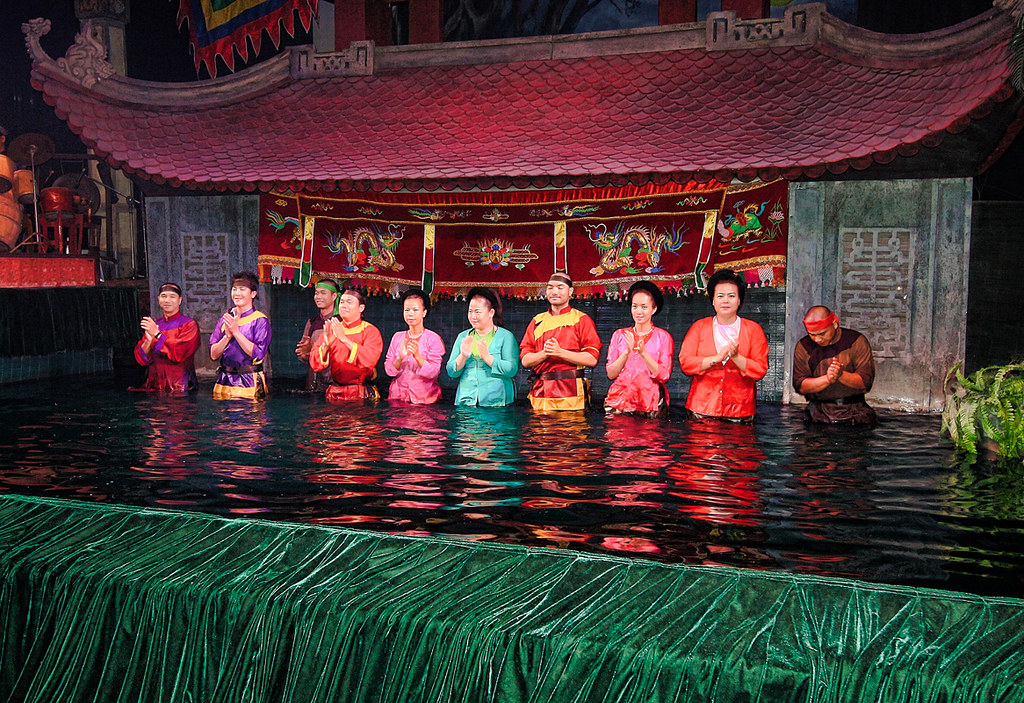I was absolutely intrigued the moment I stumbled across Vietnamese Water Puppetry. It is exactly what the name implies. The puppets and puppeteers are in water giving the illusion that the puppets are floating on top of the water.
Water puppetry is one of the world’s most unique form of direct manipulation and is probably Vietnam’s most distinctive contribution to world puppetry. Mua roi nuroc (puppets that dance on water) has been a continuous art form in Vietnam since the 1100’s. The original water puppet festivals were held inside the flooded rice paddies of the villages. A pagoda was built on top of the water to hide the puppeteers who stood in waist deep water.
In present day, the “stage” is a pool of water measuring about 13 ft x 13 ft. The murky water hides the bamboo poles which puppeteers operate to move the puppets through the water. Complicated mechanisms are used to move groups of puppets through the water. By the use of strings attached to the mechanisms, puppets can move their limbs and even smoke a cigarette or use a fan.
The puppets are finely carved and brightly painted figures which are lacquered to prevent water damage. The figures are about 1 1/2 feet large. Behind the puppets is a false front usually in the shape of a temple. There is a screen hanging from this false front to hide the puppeteers from the audience. There are around 8 to 12 puppeteers who stand in waist deep water manipulating the puppets. The puppeteers are highly educated by the national art academies.


Water Puppet Show
A typical show consists of scenes and short skits of legends and national history. The theme is rural with a strong reference to Vietnamese folklore. Stories that are passed down from generation to generation include those of the harvest, fishing and festivals. Many of the skits, especially those involving the tales of day-to-day living, often have a humorous twist.
I have the greatest amount of respect for these puppeteers. I am in awe of their ability to be able to stand in cold water and operate complicated rods and strings with wet hands.
Sources:
Vietnam Discovery
Asian Traditional Theater and Dance
World Encyclopedia of Puppetry Arts
